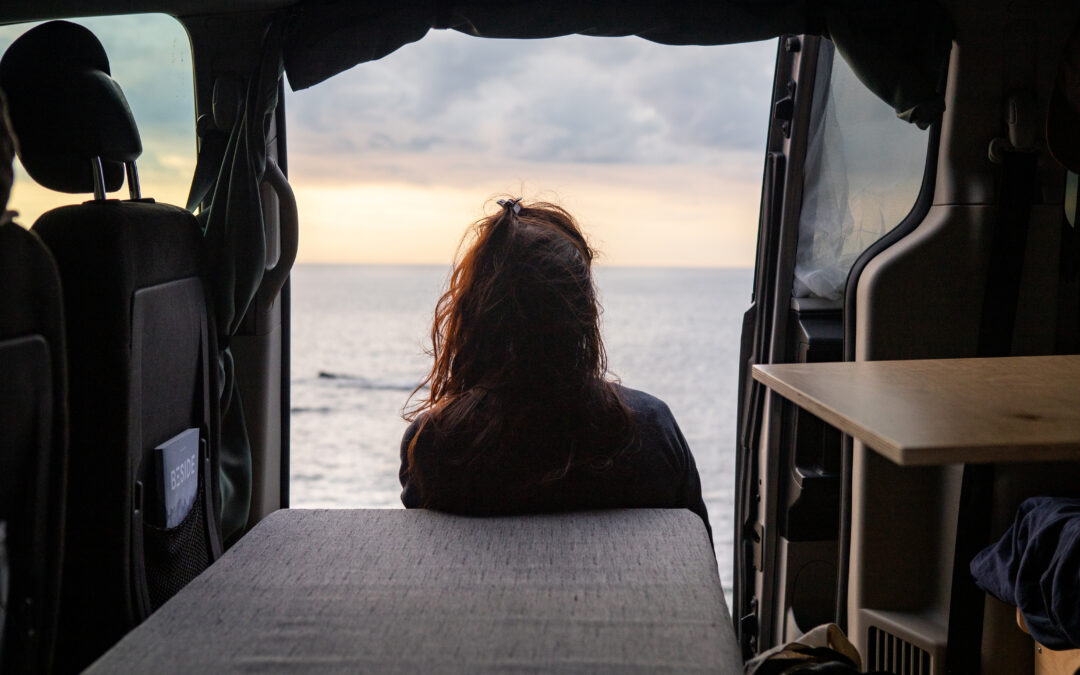Planning your itinerary: a first step
Here we are! You have reserved a minivan or you have bought your Vanpackers conversion kit, you are now ready for your next roadtrip.
Not so fast! To fully enjoy the freedom of a van trip, a little preparation is necessary despite everything. Here are a few tips…
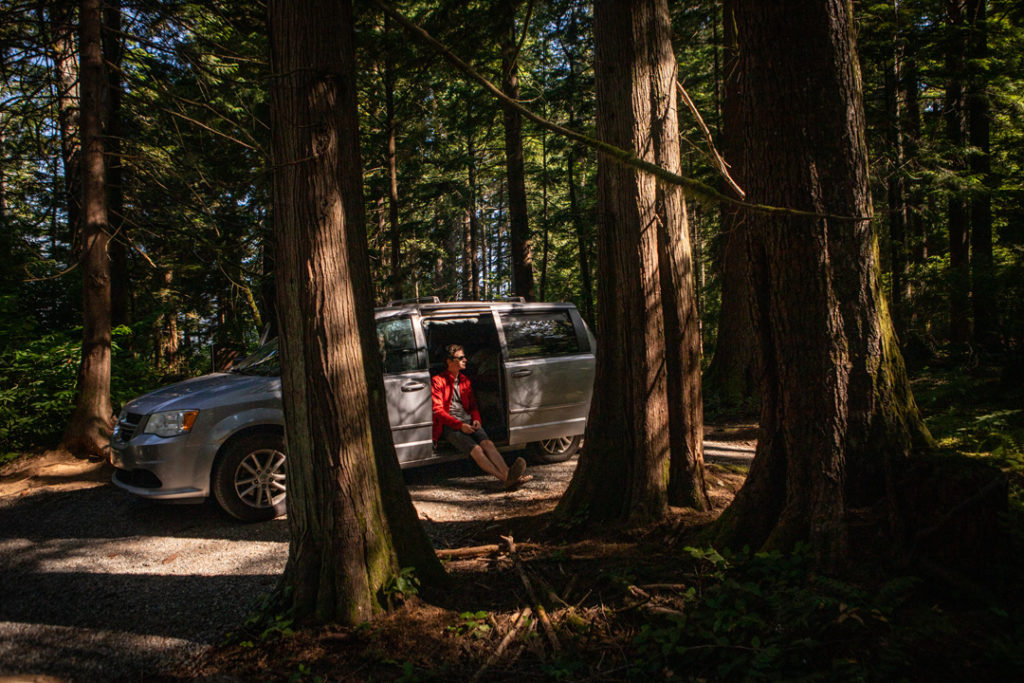

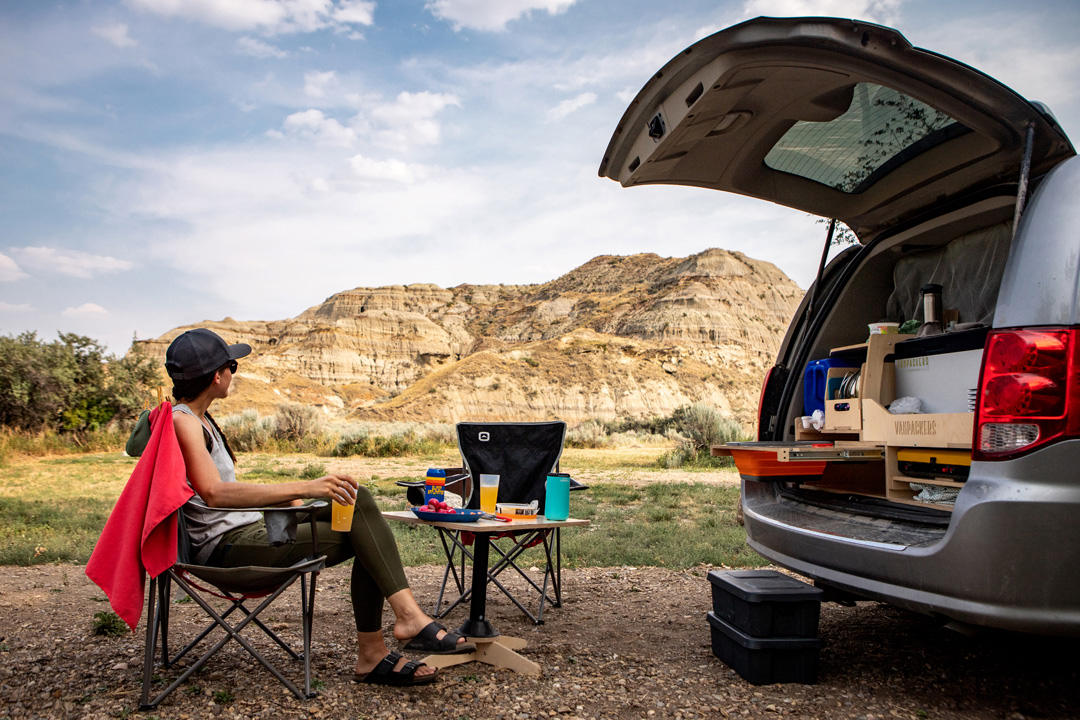
The myth of the free van life
When we think of vanlife, we always think we’ll be able to find a free place to sleep. Even if it’s often true, it also comes with some restrictions with which we do not necessarily want to bother during our vacation. Indeed… Not everyone likes to travel off-grid, not everyone can afford to travel off-seasons or during week days, not everyone wants to look for an overnight parking during hours at the end of the day nor travel 10 miles just to find a free parking.
The first step in successful preparation is therefore to find out about the places you want to explore during the period of the trip. Is it a popular area? Is this a van friendly place? Is there a lot of campgrounds, do they use the “first come, first serve” rule and do they have overflowed campsites?
The objective is to see if it will be relatively easy to find an overnight parking near the places we want to explore during the day.
If you’re visiting a touristic area that has the reputation of not being welcoming with nomad travellers, here’s our tip: book a campsite! If it’s an area that has a lot of overnight parking options on the different apps or if you’re visiting a National Park that is usually not busy, you can try it out without booking a site.
The Bruce Peninsula in Ontario is on your summer bucket list? Book in advance! You want to do hikes in the Gaspésie National Park between mid-July and mid-August? Book as well!
A step by step road trip
To keep a part of freedom that allows me to drive into the clouds, I’m building myself step by step itinerary that is built with the places that I’ve booked in advance.
For example, I always start my long journeys by 2 or 3 camping nights and when I come back, I try to do the same. And depending on how much time I leave, I try to book a place at the middle of my trip in a popular area.
During my road trip across Canada, I started with two nights at the Bruce Peninsula National Park. And during a 3-week Quebec roadtrip in the middle of summer, I booked 2 nights in Forillon National Park halfway through, marking the furthest point of the Gaspé loop.
By creating those steps, we give our trip a way and a rhythm, without being trapped by our own bookings and plans.
Other advantages: when you start a trip with some camping nights, it’ll be easier to get back to your minivan lifestyle. Your vacation will start with less stress, perfect to slow down and to get into the ultimate set up just beside the fire camp: socks and sandals!
When you plan your stops, it is important to think of the number of kilometres that is in between and the number of days you have to travel.
My way to do it? Never plan many road days in a row, even if you plan quick stops. It is the best way to make sure you won’t miss some good moments, cause you’ll be less focused on the destinations. On the road through Gaspésie, I always stop for some nights in the Bas-Saint-Laurent, and with some chance, you’ll see the most beautiful sunset of your life!
It’s also important to plan some step in bigger cities with services to fill up the cooler and the water tank.
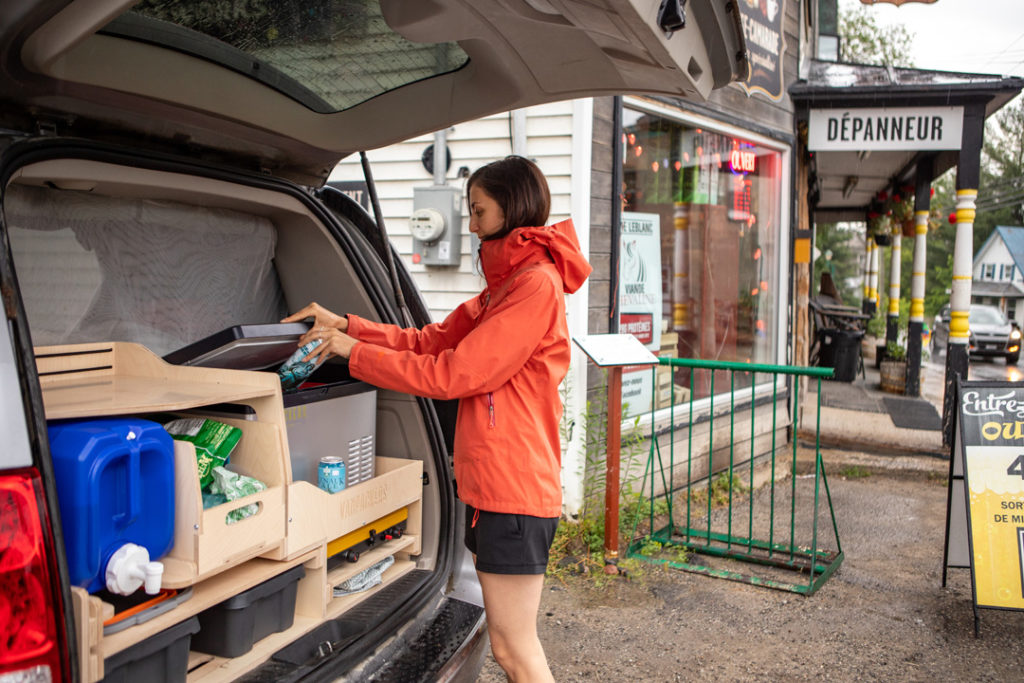
The advantages of campsites
It isn’t because you’re travelling in a van that you need to put away the traditional campsite for your itinerary.
By taking a location in a campsite – in advance or not, you will be able to be directly on site to enjoy the place, without having to drive in the mornings and evenings for your hike or your activity. Sometimes you can even walk directly from the pitch: a big luxury! Personally, I like to spend my nights in a minivan in national or regional parks. This allows me to hike at sunrise or sunset more easily, or to take advantage of the lakes around the campground to have an aperitif with the sound of the loons singing.
Let’s face it, it’s still more fun than having to drive 40 kilometers to park in line with other vans on the only free spot in the area…
With a location in a national or regional park, I therefore enjoy the landscapes more, which is the number one objective of my roadtrips.
In addition, a pitch often comes with services, such as toilets sometimes with showers, sometimes with laundry, access to drinking water, a fire pit, etc. A little comfort never hurts on a road trip!
Moreover, the big advantage of traveling by minivan is that almost all locations can accommodate you – only walk-in sites are to be banned.
Above all. Choosing the option of a campsite has a lower impact on the environment, and for that alone, it’s a winner!
Sanitary facilities, containers for waste, designated areas for fires, taps for gray water, everything is planned to limit the impact of visitors, unlike the majority of so-called wild camping sites.
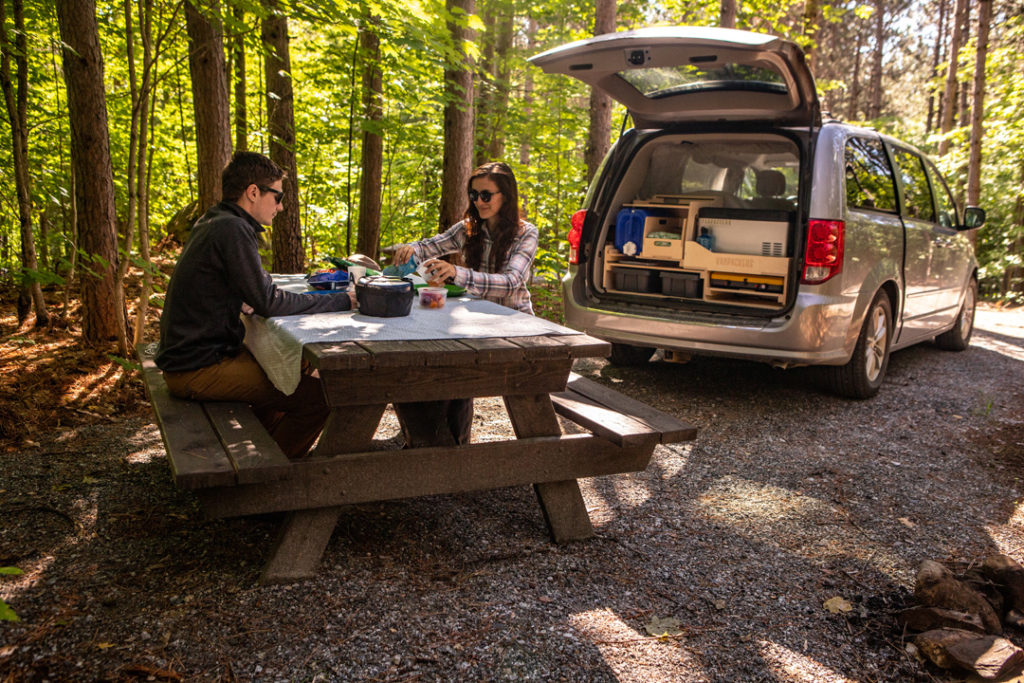
Preparing for flexibility
A successful roadtrip is a balance between bookings and a part of the unknown. By keeping more flexible periods and without reservations during the roadtrip, you can taste the joys of detours and changes of plans.
To keep some freedom, I like to include in my itinerary days without planning anything, neither route nor activity. These buffer days are useful in case of questionable weather to postpone a hike or a kayak trip. If you love the place, it allows you to stay to explore it longer, or on the contrary to use this day to drive further and find an atmosphere to your liking.
For example, in Gaspésie, I decided to cross the peninsula to leave the rain on the Baie des Chaleurs and find the mountains of the national park when I did not have a reservation there. Result, I made one of the most beautiful hikes of this trip!
But. Even this flexibility requires a bit of planning. When I’m not booking an area in advance, I look for options before departure by noting 2-3 spotted locations on apps like iOverlander. Even better by browsing google maps and/or provincial territorial maps to find my own places. It’s important to have several options in mind so you can bounce back quickly if the place is already very busy, uninspiring, or prohibited.
On my roadtrip across Canada, the best locations were non-camping sites, but so were the worst nights. We must therefore accept this precariousness if we decide to bet on non-designated sites.

Choosing these types of places also implies more preparation to travel without a trace. Examples: provide a portable toilet or disposal bags for your needs, plan to have to travel with your waste and your gray water until you find a place made specifically for getting rid of it, etc.
Countless places that tolerate nomadic travelers have been closed precisely because some travelers leave too many traces during their passage, causing the destruction of ecosystems. To avoid these negative impacts, both for the environment and for the sustainability of the vanlife, I invite you to educate yourself in the principles of Leave No Trace before hitting the road!
That’s it! All that remains is to dream of the landscapes you will encounter, to imagine all the moments you will experience on the roads. A roadtrip begins when you start planning it, so… have a good trip!
– Rémy
Traveler and hiker, Rémy is a photographer-videographer. Living in Montreal and a fan of hiking, he travels the great outdoors in search of natural wonders and advocates sustainable and eco-responsible travel. Discover his work on hisInstagram page or his website

